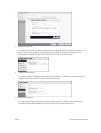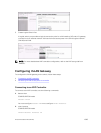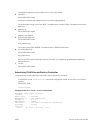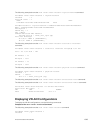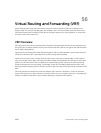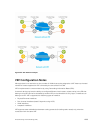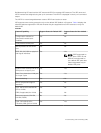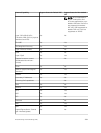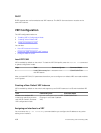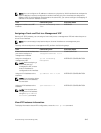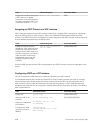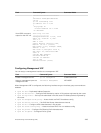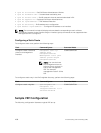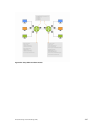
Dell Networking OS uses both the VRF name and VRF ID to manage VRF instances. The VRF name and
VRF ID number are assigned using the ip vrf command. The VRF ID is displayed in show ip vrf command
output.
The VRF ID is not exchanged between routers. VRF IDs are local to a router.
VRF supports some routing protocols only on the default VRF (default-vrf) instance. Table 1 displays the
software features supported in VRF and whether they are supported on all VRF instances or only the
default VRF.
Table 81.
Feature/Capability Support Status for Default VRF Support Status for Non-default
VRF
Configuration rollback for
commands introduced or
modified
Yes No
LLDP protocol on the port Yes No
802.1x protocol on the VLAN
port
Yes No
OSPF, RIP, ISIS, BGP on physical
and logical interfaces
Yes Yes
NOTE: OSPF supported on
all VRF ports. OSPF V2 and
BGP V4 are supported on
non-default-VRF ports also.
Others supported only on
default-VRF ports.
Dynamic Port-channel (LACP) on
VLAN port or a Layer 3 port
Yes Yes
Static Port-channel as VLAN port
or a Layer 3 port
Yes Yes
Port-monitoring Yes No
BFD on physical and logical
interfaces
Yes No
PVST, MSTP, RSTP and 802.1D
STP for VLANs
Yes No
FRRP (if applicable) for VLANs Yes No
Multicast protocols (PIM-SM,
PIM-DM, MSDP)
No No
Layer 3 (IPv4/IPv6) ACLs,
TraceLists, PBR, QoS on VLANs
Yes Yes
1010
Virtual Routing and Forwarding (VRF)



